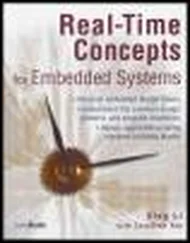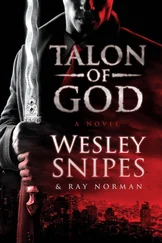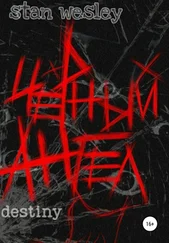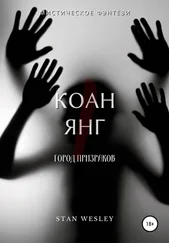Chapter 15
Mo’ Leave, Mo’ Problem
September 2006
One day in September we went cruising down Route Bronze on another leave run to drop the jundi off on vacation. The convoy was running smoothly until we reached checkpoint eleven, which is a Marine outpost with a primary mission to keep Route Bronze free of IEDs. They had not done a very good job.
We approached a bridge that crosses a large wadi along Route Bronze. Bridges are always likely areas for IED activity. Acknowledging this, the Iraqis stopped short of the bridge and conducted a sweep before the convoy passed through. We sat in our Humvee and watched Sermen and Juwad walk onto the bridge. They skipped along without a care. At the end of the bridge things changed. Sermen jumped off the ground like LeBron James preparing to dunk a basketball. Juwad ran over to Sermen’s position and started frantically hopping in place. From their actions, I figured they had found a huge cobra or scorpion. If they had found an IED, they would be sprinting to the Humvee.
The Motorola radio screamed Iraqi Arabic, “Aku abu’at chebeera hna!” (There are huge IEDs here!) Major Gaines yelled to Martin in the backseat, “What the hell did they just say, Martin?” Martin responded in his sassy fashion, “They think they found some IEDs. I told them to get away from them; hence the reason they are sprinting to the Humvee right now.” Gaines and I peered through our window and watched Sermen and Juwad clamoring to get back to the safety of their Humvee.
Sermen came sprinting to our Humvee after talking with the Iraqi convoy commander. Out of breath and sweating profusely, he described what he saw. “Jamal, holy shit, man. There are like ten to twelve artillery shells and a few propane tanks stacked on top of one another. The insurgents want to destroy the bridge, I think.” Gaines interrupted. “Sermen, are you serious? We need to get the Humvees back. If that thing goes off we will all die from the blast overpressure.” Gaines transitioned to the radio and requested the MiTT vehicle in the rear of the convoy help the jundi shift the convoy at least another four hundred meters away from the bridge.
Once we reestablished ourselves in a safer position, I drew up the nine-line EOD report while Gaines helped the Iraqi convoy commander organize the convoy. When Gaines returned he asked, “Jamal, you got that nine-line ready?” I replied, “Roger, Sir. One problem though. Our comm sucks balls here!”
We were sandwiched between two hills on both sides of the road and our communications equipment was unable to operate. As a workaround we sent a vehicle in the rear of the convoy farther up the road and had them relay the message to checkpoint eleven, which could relay the message to the 2/3 headquarters in the dam.
The response we received from checkpoint eleven was ridiculous: “Shadow, this is checkpoint eleven; expected time of arrival for EOD is at least four hours. How copy?” How copy? How about EOD get off their ass and help us out! We were stuck with 171 unarmed jundi in civilian clothes prepared to go on leave and sitting in the middle of the desert with a large bull’s-eye on our chests. We were not waiting four hours for an EOD team. If one insurgent mortar attack landed near our convoy, it might destroy 60 percent of the Iraqi battalion.
We sent a message back to checkpoint eleven, highlighting our inability to wait four hours for an EOD team. We sat and waited for a response. Meanwhile, the Iraqis were getting restless. Garbled Arabic came over Martin’s radio. Nuts asked Martin, “Martin, what did they say?” Martin responded, “Basically, the jundi are tired of waiting and have decided to go investigate the IED themselves.” Gaines hollered, “What? Why would they” Before Gaines could finish his sentence, we noticed the Iraqis were already sending out jundi -bots to investigate the IED.
Sermen and Juwad were halfway across the bridge. There was no convincing them to return to safety, and none of us was crazy enough to drag them back to the Humvees. This was an Iraqi solution to a problem—not a Marine solution. Was it the safest solution? Not quite. Could it work? Yes. So we let them go with it. Sermen, standing on top of enough explosive force to turn him into a pink mist, relayed in colloquial English over the Iraqi radio net, “Cooool, man. Dis a really, really, really big one!” Major Gaines quickly asked Martin, “Did he just say, ‘Wow, this is a really big one?’” Martin laughed and said, “I think so.”
Talk about having a high level of risk tolerance. I wish I could say this was a sign of Iraqi bravery, but I think it was more a sign of dumbassery. All the same, his actions were not very surprising. To the Iraqis, when and how they die is a matter of insha’allah. Thus there is no problem with standing on an IED, because God is going to choose when to kill you anyway. There is no point taking precautions against death. I guess this could also explain why the jundi never wear their protective gear in combat.
After dancing on the live IED for a few minutes, Sermen and Juwad came to their senses and jogged back to the Humvee to give us their full report. Their estimate was that there were two propane tanks with three hundred pounds of PE-4 explosives per tank and fifteen 155-mm artillery shells set up to ensure the death of any vehicle that happened to stumble upon them. This was a huge IED and one that EOD needed to address. We decided to wait a bit longer for a response from checkpoint eleven on the status of the EOD team.
We sat, and sat, and sat. I drooped into the driver’s seat of the Humvee, cranked up our defunct air-conditioner, and prayed EOD or a relieving unit would show up soon. I was about to go insane with boredom when I captured a glimpse of a sheep farmer walking through the wadi. He was slowly moving his way toward the IED.
I figured the sheepherder would not approach the IED. After all, it was likely he had played a part in providing the reconnaissance for the insurgents who actually placed the IED in the ground. I was wrong. The sheepherder slowly pushed his herd up the hill and headed directly toward the intersection of where the bridge met the road. He was about to turn his flock of sheep into one large shish kebab. I woke up Martin, who was in deep slumber. “Martin, dude, call Lieutenant Abass and tell him to yell at that herder before he blows himself up!”
After Martin’s warning, Lieutenant Abass hopped out of the vehicle and hollered at the sheep farmer, “You are heading directly for an IED. Please move away. It will destroy your entire flock!” The sheepherder obviously did not get the message. He pushed his sheep to a small grassy area almost directly on top of the IED. Abass continued to yell to the sheepherder, to no avail. The herder was simply too far away to understand the message. Thankfully, the man found out the news for himself. The sheepherder started running in circles. He realized he could lose his entire livelihood if the insurgents decided to detonate their IED. He jumped back and forth within the herd trying to get his flock to respond. The sheep were fixated on the grass. Every time the herder moved a few sheep away, they would sneak around him and run to get more grass. The scene was hilarious. Eventually, the sheep got the message after the herder smashed them on the face with a stick a few times and they exited the area. Phew, no shish kebab tonight.
Three hours later a unit from 2/3 arrived to relieve us. We regrouped the convoy and decided to create our own trail through the wadi so we could continue on the route. We had to go off road if we wanted to get through the three-hundred-meter-wide riverbed. For the Humvees this would be an easy task; however, our convoy had five Leylands full of jundi going on leave, a wrecker vehicle, an ambulance, and a BMW sedan we had confiscated from suspected insurgents the prior week. This was going to be quite a challenge.
Читать дальше












